Modiano Patience
Patience cards published by Modiano, c.1945.
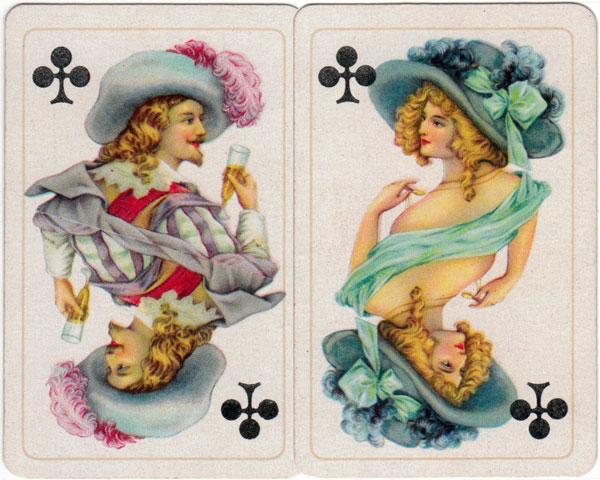
Modiano Patience
Modiano began printing playing cards in 1884 when a lithographic press was purchased to expand their printing business. Combining artistic style and quality, these designs were first printed as “Centaur” or “Centaurus” in the 1890s for the Austrian Lloyd Steamship Company of Trieste. They were also published in different editions with alternative artwork on the Aces and Joker, including small indices in the margins. Here the designs are presented as a Patience deck with decorative aces and a Jester Joker, the Modiano logo on the reverse, but the box is plain with no title. A fortune-telling version is also known to have been published in the 1980s or 90s.
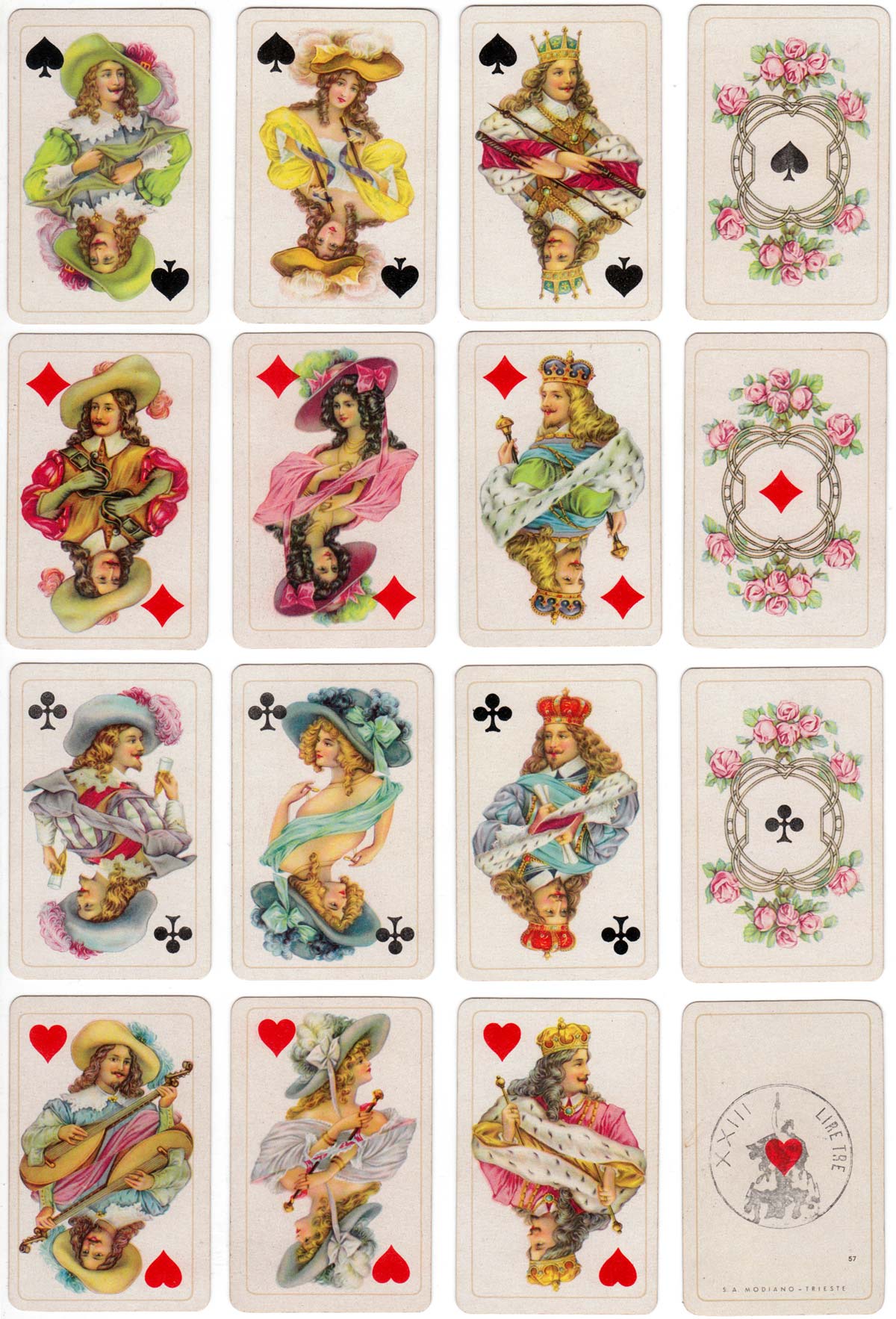
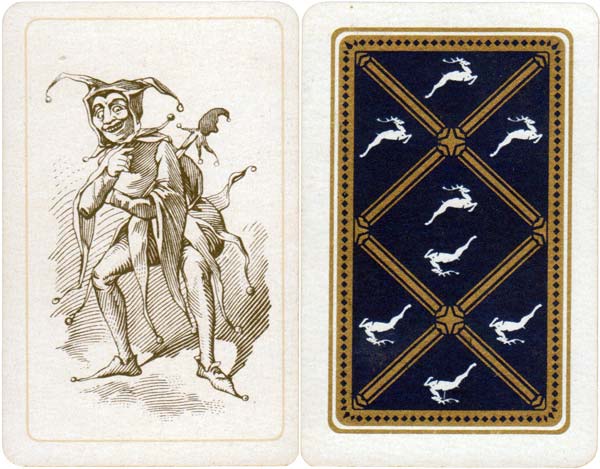
Above & right: Patience cards published by Modiano, c.1945. The stamp on the ace of hearts was in use during the 'Italian Socialist Republic' 1944/45. The number 'XXIII' is for Trento. The reverse shows the Modiano logo repeating inside a blue and gold lattice. The box is plain with the Modiano logo.
REFERENCE: Peter Endebrock's playing-card pages: Playing-Card Tax Stamps from Italy→
See also: Modiano website →
By Rex Pitts (1940-2021)
United Kingdom • Member since January 30, 2009
Rex's main interest was in card games, because, he said, they were cheap and easy to get hold of in his early days of collecting. He is well known for his extensive knowledge of Pepys games and his book is on the bookshelves of many.
His other interest was non-standard playing cards. He also had collections of sheet music, music CDs, models of London buses, London Transport timetables and maps and other objects that intrigued him.
Rex had a chequered career at school. He was expelled twice, on one occasion for smoking! Despite this he trained as a radio engineer and worked for the BBC in the World Service.
Later he moved into sales and worked for a firm that made all kinds of packaging, a job he enjoyed until his retirement. He became an expert on boxes and would always investigate those that held his cards. He could always recognize a box made for Pepys, which were the same as those of Alf Cooke’s Universal Playing Card Company, who printed the card games. This interest changed into an ability to make and mend boxes, which he did with great dexterity. He loved this kind of handicraft work.
His dexterity of hand and eye soon led to his making card games of his own design. He spent hours and hours carefully cutting them out and colouring them by hand.

Leave a Reply
Your Name
Just nowRelated Articles

Hats-Off!
Hats-Off! miniature card game published by E. S. & A. Robinson, c.1930s.
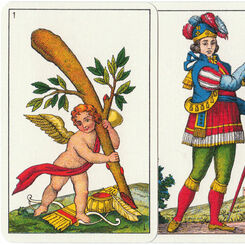
Sarde Pattern
Sarde pattern published by Modiano, c.1975, based on early XIX century Spanish model.
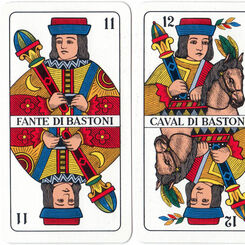
Triestine Pattern
The Triestine pattern is derived from the Venetian (Trevisane) pattern but with its own characterist...

Trentine Pattern
Trentine Pattern

Primiera Bolognese
Primiera Bolognese by Modiano, c.1975

Bergamasche Pattern
Bergamasche Pattern by Modiano, 1970s.
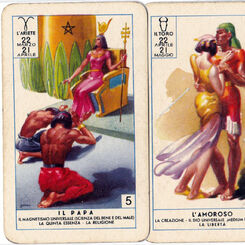
Il Destino Svelato Dal Tarocco
The Cagliostro Tarot was first published in 1912 as “Il Destino Svelato Dal Tarocco”.

Genovesi Pattern
Genoese pattern from Italy.
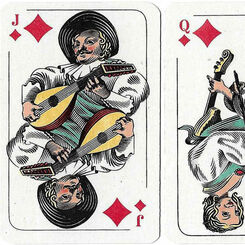
Czech Patience Cards
Patience size playing cards published by Obchodni Tiskarny of Prague, under the brand “Casino”, with...
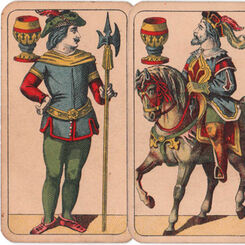
Fantasy Italian style
Fantasy latin-suited pack with court figures in pseudo-medieval style, Fratelli Armanino, Genova, c....

World Bridge
‘World Bridge’ produced by Modiano in Trieste, Italy, since around 1950.
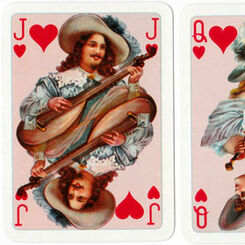
Club Bridge
Modiano’s ‘Club Bridge’ is a new edition of a stylish deck originally published in c.1895.
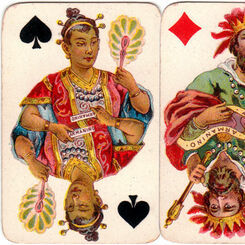
Carte per Signora
“Carte per Signora” patience pack was produced by Fratelli Armanino, Genova, in c.1897.
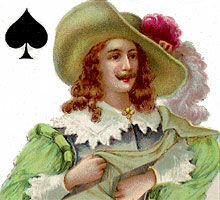
Austrian Lloyd Steamship Company
Possibly one of the most beautiful decks produced for commercial purposes, this was printed by Modia...

Clifford Toys
Clifford Toys is a brand name of F. Levy & Co., Ltd, London, sellers of toys and fancy goods.
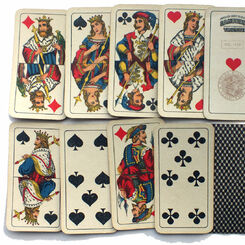
Lombardy (or Milanesi) pattern
The origins of the Lombardy pattern probably lie in the early 19th century when it was a full-length...

Miniature Playing Cards
Miniature Playing Cards from around the world.
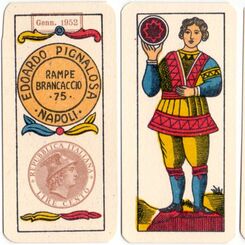
Brescia pattern
The Brescia pattern contains elements which come from a past age.
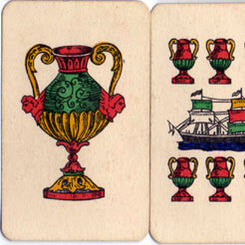
Sicilian Pattern
The Sicilian pack has a similar composition to the Neapolitan pack, and is small and squat in appear...

Neapolitan Pattern
Cartine da Gioco Vesuvio miniature Neapolitan pattern.
Most Popular
Our top articles from the past 60 days


 Your comment here. Your comment here. Your comment here. Your comment here. Your comment here. Your comment here. Your comment here. Your comment here. Your comment here. Your comment here. Your comment here. Your comment here. Your comment here. Your comment here. Your comment here. Your comment here. Your comment here. Your comment here. Your comment here. Your comment here. Your comment here. Your comment here. Your comment here. Your comment here. Your comment here. Your comment here. Your comment here. Your comment here. Your comment here. Your comment here. Your comment here. Your comment here.
Your comment here. Your comment here. Your comment here. Your comment here. Your comment here. Your comment here. Your comment here. Your comment here. Your comment here. Your comment here. Your comment here. Your comment here. Your comment here. Your comment here. Your comment here. Your comment here. Your comment here. Your comment here. Your comment here. Your comment here. Your comment here. Your comment here. Your comment here. Your comment here. Your comment here. Your comment here. Your comment here. Your comment here. Your comment here. Your comment here. Your comment here. Your comment here.




















